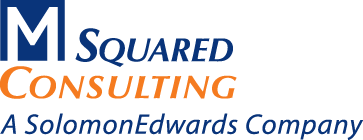“SolomonEdwards Consulting creates the strategic business alliances that are a model for the way innovative corporations will staff and manage through the 21st century.”
– Business Management Author
The differentiator between whether a company succeeds or fails oftentimes boils down to its ability to optimize business processes. Inefficient processes cost organizations up to 20-30% of their annual revenue, according to IDC research.
Here are a few examples of processes costing your company:
- IT departments spend 30% of their time on basic low-level tasks.
- 50% of companies spend $5-25 per manually processed invoice.
- 64% of sales reps’ time is spent on non-revenue generating activities, with 25% being administrative work.
- The cost of inefficiency also includes lost opportunity cost i.e., the value of the hours your employees could be spending on other jobs.
SolomonEdwards brings hands-on expertise and experience to improve the efficiency and effectiveness of people, process, and systems. Drawing on our experience and multi-disciplinary approach. From evaluating a single work stream to tackling an enterprise-wide initiative, our services include:
- Current Business State Analysis
- Business Process Redesign/Improvement
- Strategy Development
- New Process Design
- Process Improvement Team Assembly and Management
- Training Program Development
- Gap Analysis
- Benchmarking
- Implementation of New Processes and Procedures
- System Optimization and Implementation

Challenging “old” ways whenever possible
In a world that is more and more fast paced it may be time to challenge our “old” ways approaching Process Improvement and Redesign. Traditionally we start with a Current State (As-Is) analysis and then move on to Desired State (To-Be) state and then perform a gap analysis. In many cases it is an unnecessary slow approach, and the result is still anchored in the current state. Why not flip it around? Start with the Desired State. It will energize the team to focus on future improvements and frees the thinking to be more creative. The participants will get a sense of accomplishment before tackling the Current State and Gap analysis and the eagerness and excitement to get to what is now a known future state speeds up the last 2 activities. It is unorthodox but it works and the end result is achieved faster and is vastly improved.


